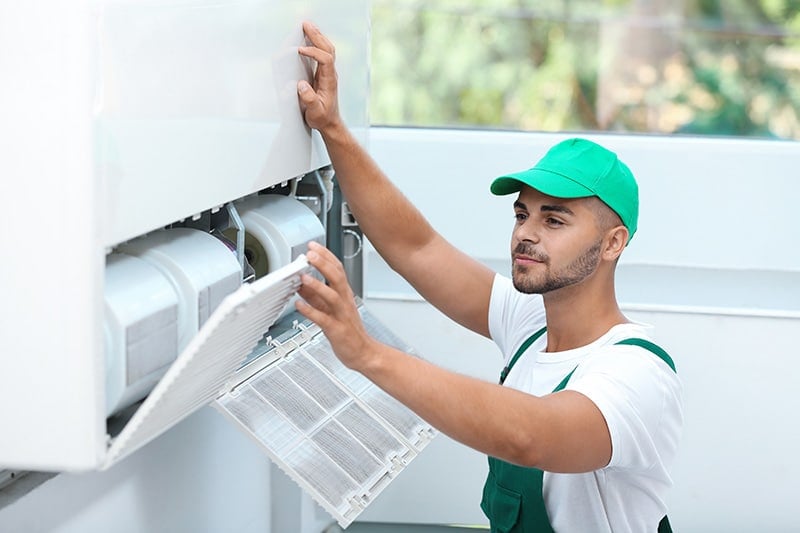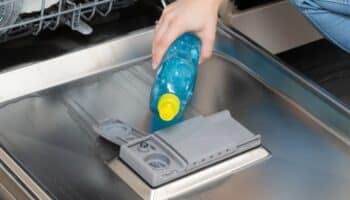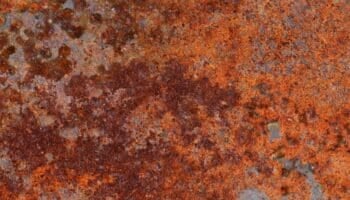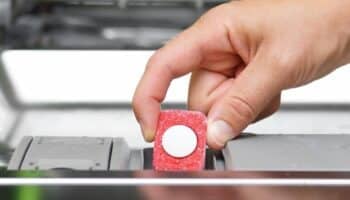We've independently reviewed this article to make sure it's as accurate as we can make it.
To find out more about our article creation and review process, check out our editorial guidelines.
Is your dishwasher leaving your dishes soaking wet?
You’re not alone! I know how frustrating it can be to have this happen, especially when you need to use those dishes.
The good news is that you’ve come to the right place for answers.
If your dishwasher leaves your dishes soaking wet, there’s a good chance the rinse aid dispenser is empty, you’re not using the right water temperature, or the heating element is not working. Drainage problems or improper loading could also explain the issue.
Read on to fix the problem!
Why trust us? This article was written in collaboration with James Blackford, our appliance repair expert. James has over 16 years of experience as an appliance technician, works as a Master Technician for SquareTrade, and runs his own appliance repair company.
5 Reasons Why Your Dishwasher Leaves Your Dishes Soaking Wet
To make things easier for you, I’ve compiled a list of the 5 most common reasons why your dishes are coming out from your dishwasher soaking wet. These are:
#1 You’re Not Using Rinse Aid
Rinse aid is a liquid solution that makes water slide off your dishes easily, aiding in faster drying and reducing water spots.
So, if your dishwasher is leaving your dishes soaking wet, please open the rinse aid dispenser and refill it, making sure it reaches the max fill line.
In case you’ve run out of rinse aid, you can purchase it from different places, such as grocery stores, online retailers, or home improvement stores.
#2 Improper Loading
Overloading the dishwasher can also explain why your dishes are not getting dried.
You need to make sure there’s enough space between your dishes to allow airflow.
Additionally, when loading your dishwasher, please avoid stacking dishes on top of each other. I also recommend facing them towards the center and placing the large items, such as pans, at the back.
When unloading your dishes, make sure you unload the bottom dishes first to ensure they remain dry.
Bear in mind that plastic dishes may stay wet, while ceramic and glass dishes come out dry. So, if you notice that only plastic dishware is still wet, you may need to give them a quick dry by hand.
#3 Wrong Water Temperature
Another reason why your dishwasher may be leaving your dishes soaking wet is that the water isn’t hot enough.
You see, the hotter the water, the better the drying results.
So, to make sure the water is at the correct temperature, please run some water in your kitchen sink and measure the temperature, it should be at around 120ºF.
If you don’t have a thermometer available, you can use a simple hand test. If it’s too hot that you need to pull your hand away, then it’s probably at the right temperature.
By making sure the water is nice and hot, you’ll improve your dishwasher’s drying results.
#4 Faulty Heating Element
The heating element is responsible for heating up the incoming water and air to the desired temperature. This way, your dishes can come out sparkling clean and dry.
So, if you’ve tried the fixes above, but your dishwasher is still wet inside and not drying your dishes, there’s likely an issue with this component.
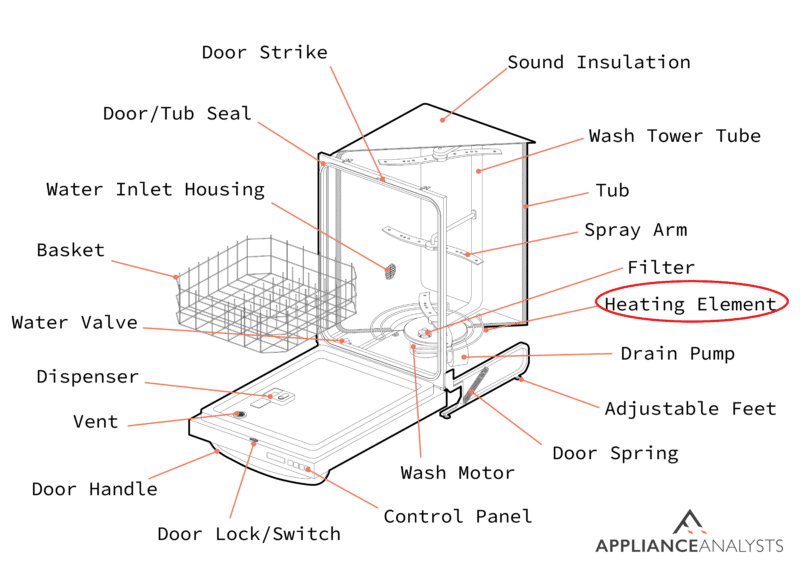
To check if that’s the case, please follow these simple instructions:
- Pull out your dishwasher. This way, it will be much easier to access the heating element and its terminals.
- Remove the wires attached to the heating element. You may need to lie on the floor, so if you cannot do it, please ask someone for help.
- Set your multimeter to the resistance setting. Then, touch each probe to the terminals.
- You should get a reading between 4 and 14 ohms, but please verify this with the manufacturer’s manual.
If you don’t have any kind of reading, then you’ll definitely need to replace the heating element.
Don’t worry, though! This component costs around $20 to $50, and it can be easily replaced.
If you want to get any replacement part – or see how much one would cost – click to enter your model number in the search bar below. Our partners at AppliancePartsPros stock almost every part with free guides on how to install them.

However, if your heating element is built into your wash pump assembly, you’ll need to call a professional and replace the entire assembly, which will be much more expensive.
#5 Drainage Issues
Another reason why your dishwasher is leaving your dishes soaking wet is that there’s a drainage issue.
To rule out this as our possible culprit, please clean the filter and check the drain hose. Make sure the hose is not kinked or clogged, and replace it if there’s any visible damage.
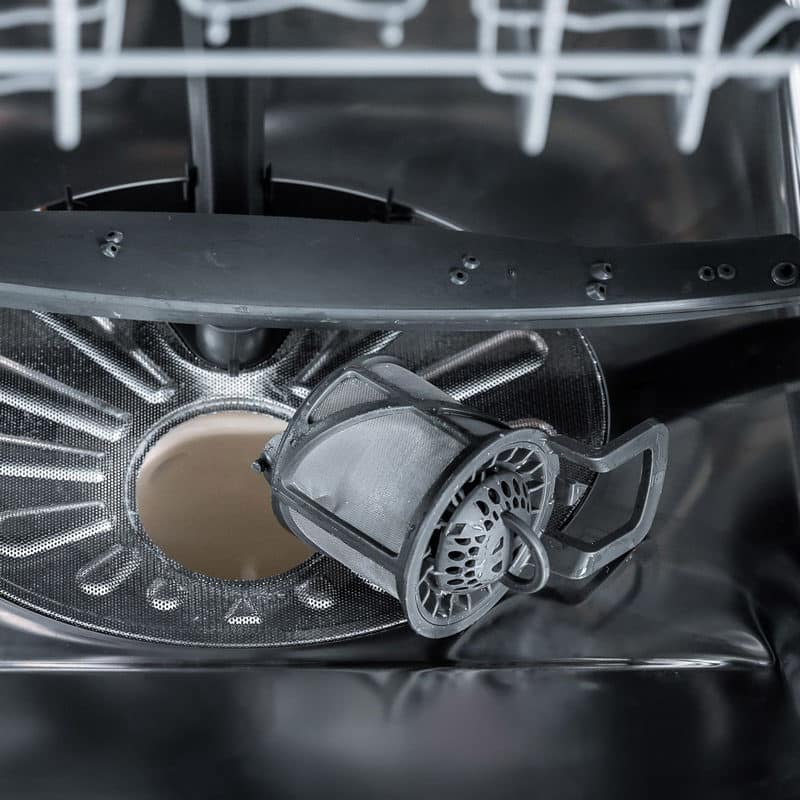
I also recommend making sure the drain pump is working correctly. If this component is faulty or clogged with debris, it won’t be able to pump out all the water down the drain, resulting in wet dishes.
Conclusion
That about covers it! I hope that this article has helped you gain some more confidence in solving this annoying issue.
Remember, if your dishwasher is leaving your dishes soaking wet, you’ll need to make sure your dishes are not touching each other and use a rinse aid.
Don’t forget to use the correct water temperature (around 120ºF) and check the heating element and drainage system to ensure your dishwasher’s effectiveness.
Thank you so much for reading this article! If you found it helpful, please check out our other related guides below.
Have a great day!


